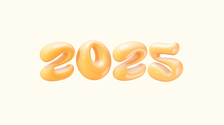wisekimi
'what the matter was' vs. 'what was the matter'
Hi, Dear All
The following is a question from an English test of a high school in China.
My teacher asked me________with Mary last night.
#A.what is the matter #B.what was the matter
#C.what the matter is #D.what the matter was
#B is said to be the correct one/or the best one as the answer.
For me, D should be the correct one, according to the grammar I learned, just like:
A. I know where he is.(Right)
B. I know where is he.(Wrong)
However, I often see lately phrases of B-type on the internet.
Am I wrong, or is this just an evolution of English language?
Could anyone tell your opinion?
Yuanzhe, from Beijing, China
٢٩ ديسمبر ٢٠١٤ ١٤:٠٢
الإجابات · 7
2
You're right, the answer should be D.
B would only be correct if you added some punctuation to make it a direct quote:
My teacher asked me, "What was the matter with Mary last night?"
٢٩ ديسمبر ٢٠١٤
2
Even without looking at the answer, I can see the question is awkward. The problem here is that a non-native wrote the question. I agree with you that D is technically correct - and how I would natively write it - but the sentence needs to be rearranged as well.
I'm pretty sure that the type-B examples you see online are either cases of plain laziness, or non-native errors.
٢٩ ديسمبر ٢٠١٤
1
OK, so I've done some research. I'm going to say that both B and D are technically correct, although the deeper you go, the less agreement there seems to be as to "why".
The general rule is that when reporting interrogative questions in indirect speech, in addition to altering the verb tense, you alter the sentence structure to make it a declaration. This would be "D". However, when indirect speech reports questions that originally contained "what, who, or which" + "to be" + a complement, you can switch things around, which would be the "B" scenario.
She asked me which color was best. (Correct)
She asked me which was the best color. (Also correct)
He asked what the red building was. (Correct).
He asked what was the red buidling. (Also correct).
They wanted to know who the tall man singing was. (Correct)
They wanted to know who was the tall man singing. (Also correct)
My teacher wanted to know what the matter was with Mary.
My teacher wanted to know what was the matter with Mary.
There seems to be no academic consensus on why this exception works. Some say it is a purely regional or dialectical phenomenon. (And modern American English might lean towards "what was the matter"). Others believe it is influenced by style, arguing that keeping the "question order" ("what was the problem with Mary") "flows" better in longer sentences. Some authorities say this exception works because "to be" is functioning as a copula (linking verb). Older British authorities such as Fowler's "Dictionary of Modern English Usage" acknowledge the exception, but caution against it. More modern ones such as "A Comprehensive Grammar of the English Language" acknowledge the exception and are ok with it.
Some online discussions also suggest a regional preference. If your teacher is from America or studied there, he or she might prefer B. But I think they're both ok.
٣٠ ديسمبر ٢٠١٤
1
I think B is correct.
Remember the difference in structure between declarative statements and interrogatives.
Declarative: I know what the matter is with Mary.
Interrogative: What is the matter with Mary? (correct)
Interrogative: What the matter is with Mary? (Incorrect).
What was the problem with Mary? (correct)
What the problem was with Mary? (incorrect)
٢٩ ديسمبر ٢٠١٤
''What is the matter with u''is an expression said when you sense that something is wrong with the person in front of you...''last night''makes the sentence in the past thats why we replaced is by was
٢٩ ديسمبر ٢٠١٤
لم تجد إجاباتك بعد؟
اكتب اسألتك ودع الناطقين الأصليين باللغات يساعدونك!
wisekimi
المهارات اللغوية
الصينية (المندرية), الإنجليزية, الألمانية, اليابانية, الكورية
لغة التعلّم
مقالات قد تعجبك أيضًا

Preparing for Interview Success
18 تأييدات · 11 التعليقات

Essential American Books for Language Learners: Learn English and Culture in One Go
35 تأييدات · 6 التعليقات

Setting Goals for Your Language Learning Journey in 2025: A Guide for ESL Speakers
10 تأييدات · 2 التعليقات
مقالات أكثر
